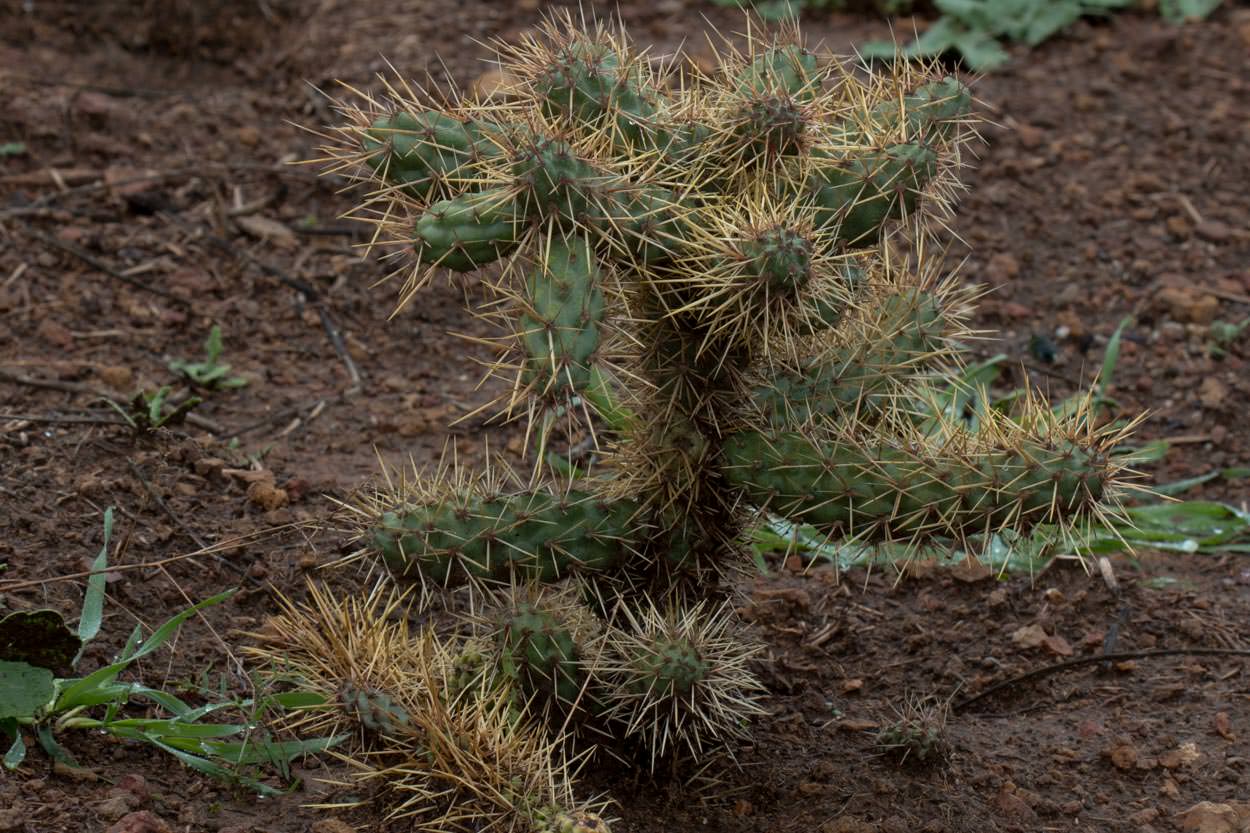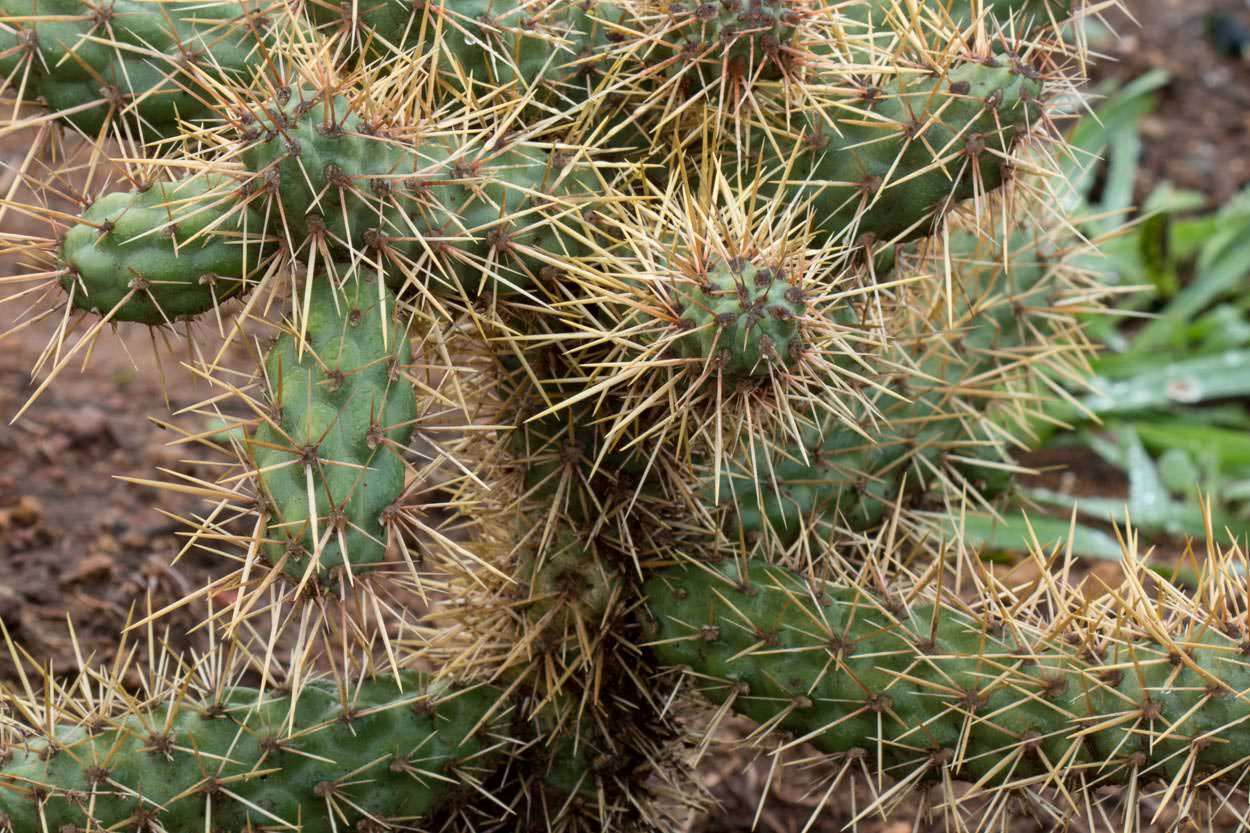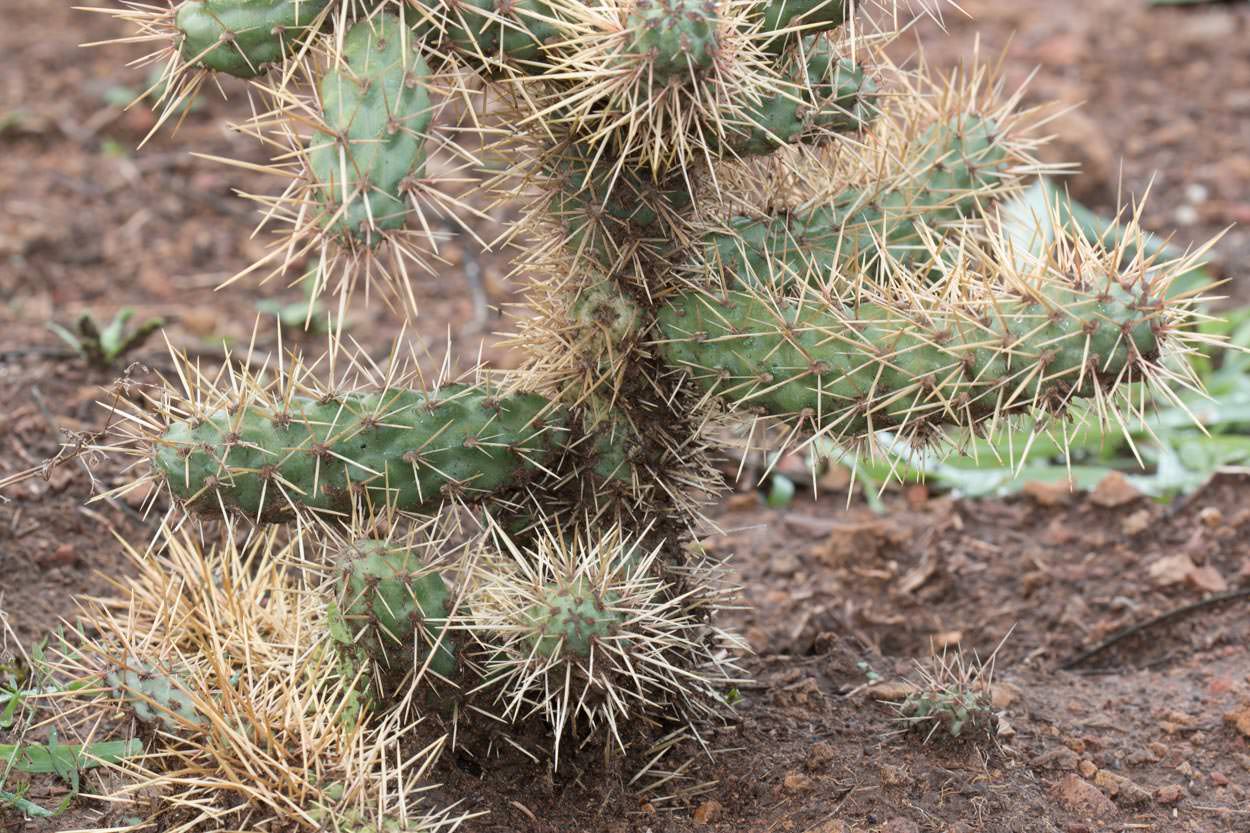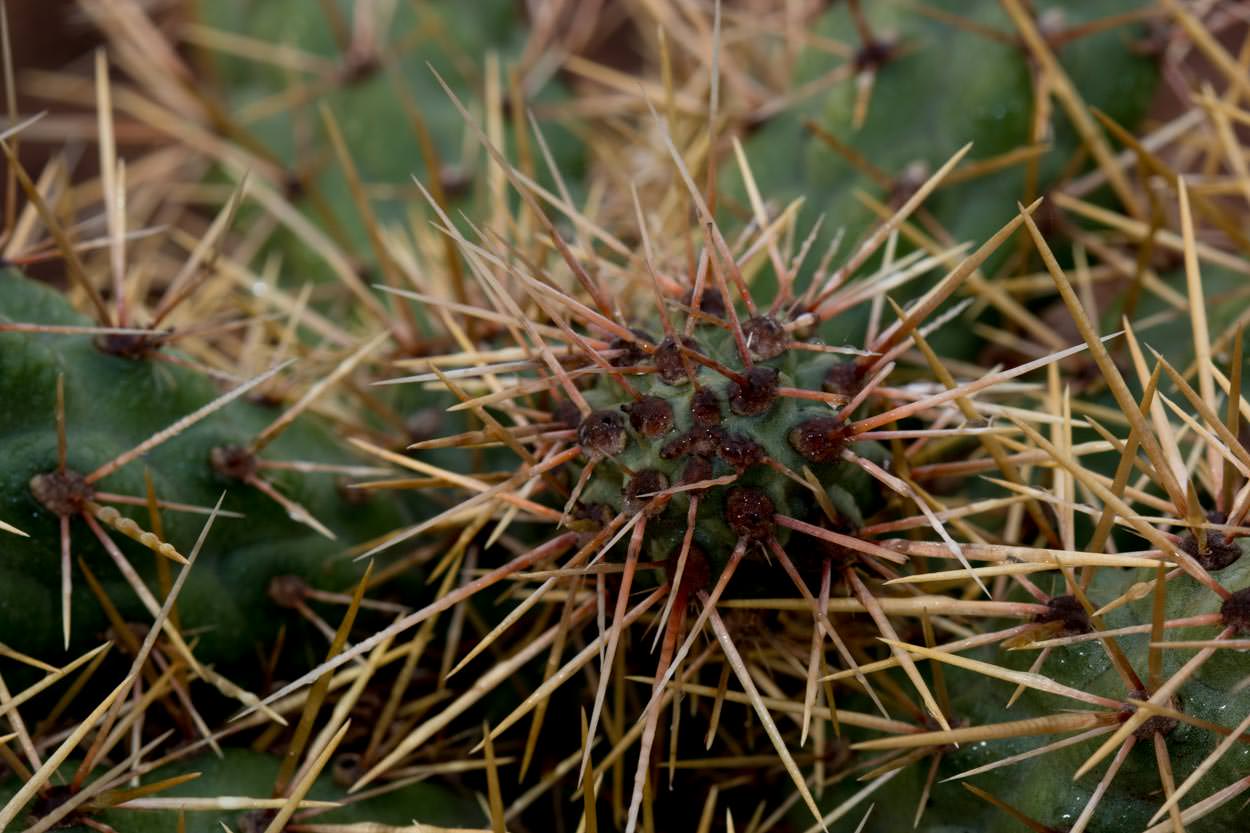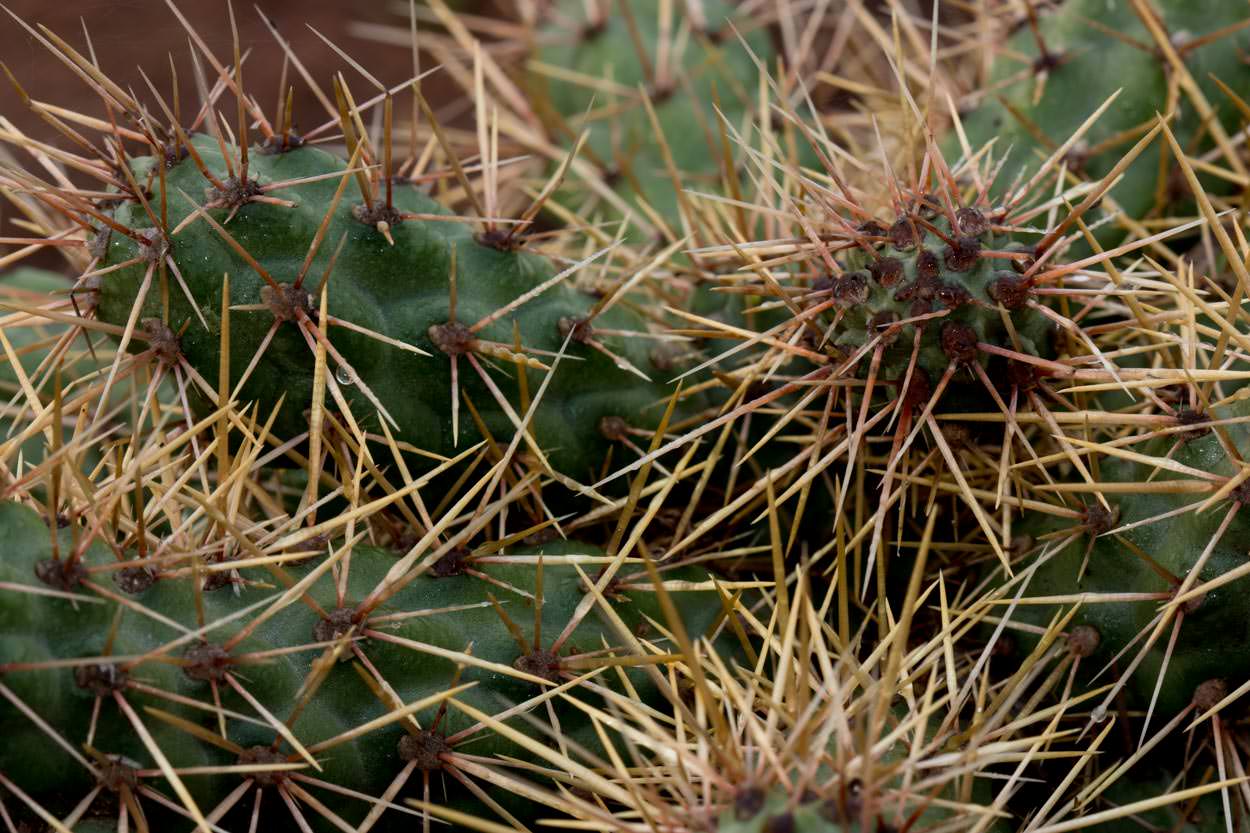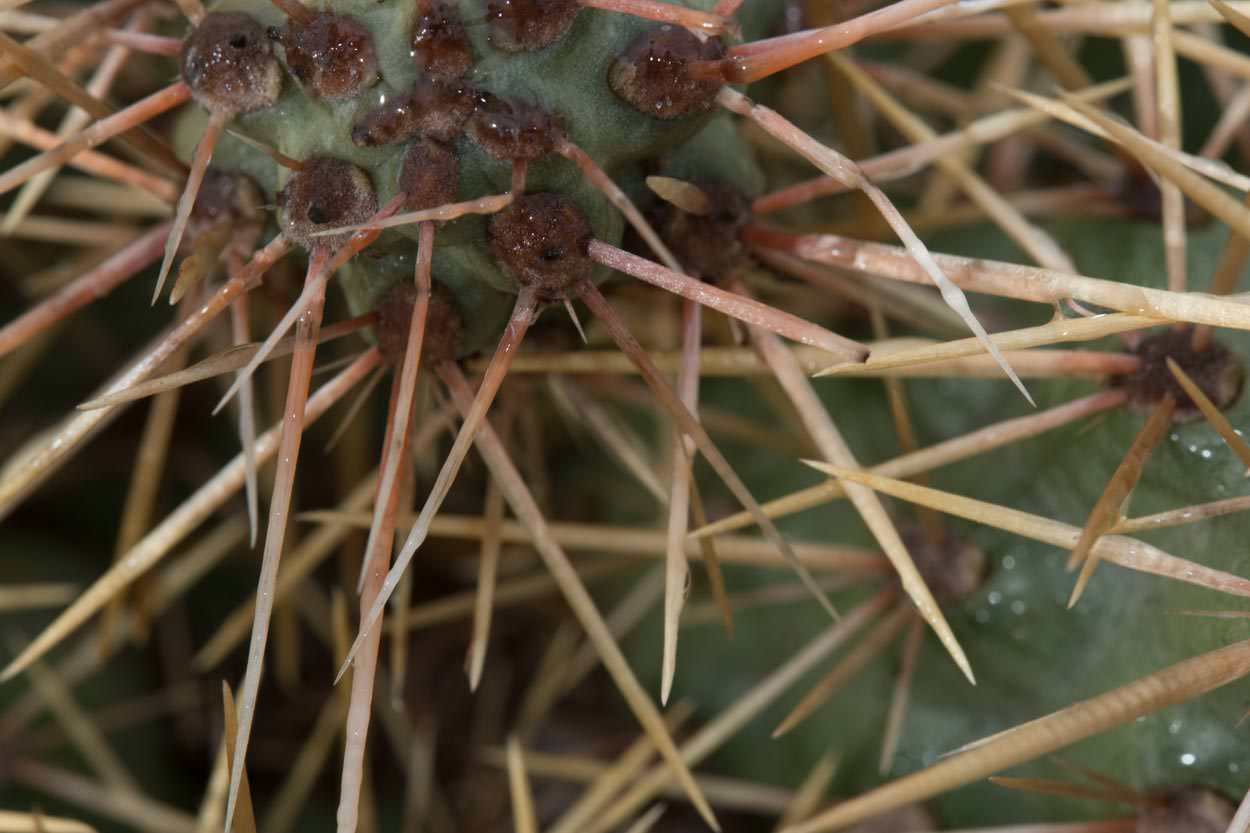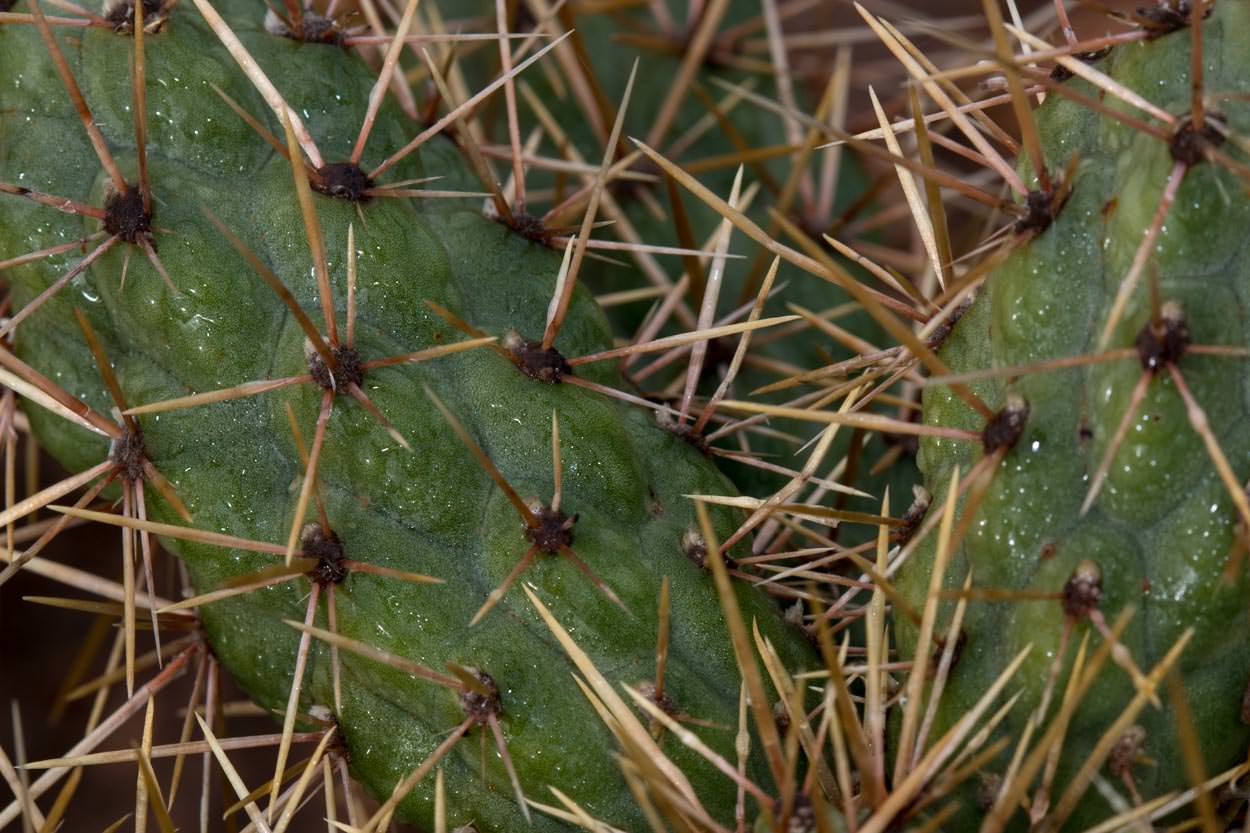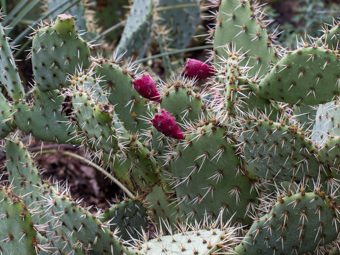Coast Cholla
- Cylindropuntia prolifera
| Common Name(s): | Coast Cholla |
| Scientific Name: | Cylindropuntia prolifera |
| Family: | Cactaceae (Cactus) |
| Plant Type: | Shrub |
| Size: | up to 6 feet high |
| Habitat: | dry slopes and grasslands at low elevations near the coast or in Sage Scrub |
| Blooms: | April to June |
| Fire Response: |
There are a handful of cactus plants found in the area and they can be divided into the prickly pears with their dish-shaped pads and the cylindrical-stemmed chollas. Both types contain special structures in the leaf axils called areoles which are where spines, flowers and branches form from. The branching and fleshy stem segments have two kinds of spines, the more obvious of which are not barbed but there is a secondary much smaller set of spines called glochids which are barbed.
Coast Cholla normally blooms from April through June, with rounded rose to magenta blossoms about an inch in diameter. There are small leaves which appear on new growth but last only a few months. The end joints on the plant's stems dislodge easily and their spines attach to clothing or fur on passersby; a nuisance to us but the primary means of reproduction for the plant. This plant is abundant in the exo-Santa Monica Mountains Thousand Oaks area in and around Wildwood Park while not very common within the Santa Monica Mountains proper.
This plant was formerly classified in the genus Opuntia. The genus name Cylindropuntia means cylindrical. The species name prolifera refers to the plant's proliferation by means of off-shoots. The Valley Cholla, Cylindropuntia californica or Opuntia parryi, is a related cylindrical-stemmed cactus.
Contributed by Liz Baumann
Featured Plants in the Cactaceae (Cactus) Family:
Last modified: May 17 2024 08:25:09.
Number of Images: 8
Image Size Total: 1,490,369
References:
Wildflowers of the Santa Monica Mountains, by Milt McAuleyFlowering Plants: The Santa Monica Mountains, Coastal and Chaparral Regions of Southern California, by Nancy Dale
Chumash Ethnobotany: Plant Knowledge Among the Chumash People, by Jan Timbrook
Leaf Shapes Primer - Botanical Terms for Leaves: - Link

